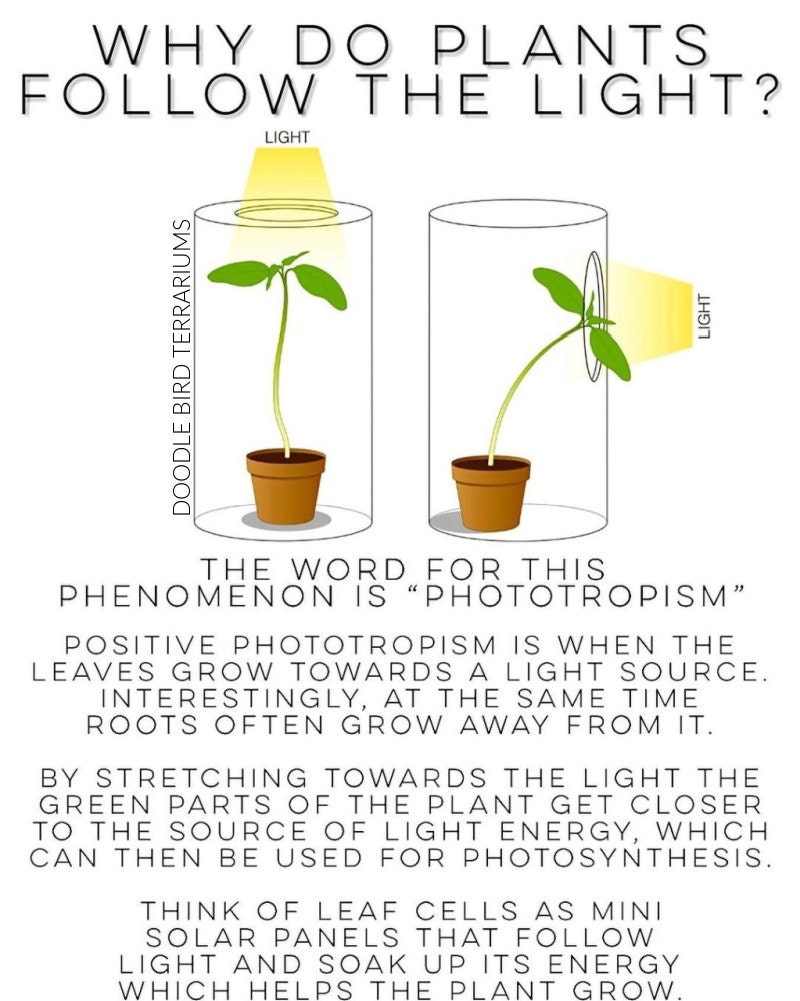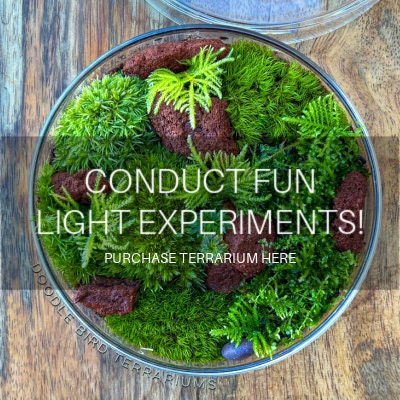Leaves that follow the light: you may have noticed this phenomenon before, perhaps in your garden or houseplants, maybe even in your terrarium. You may have assumed it is because the plant needed a brighter location, and while this can sometimes be true there is another more basic reason plants stretch toward a light source and the process is called phototropism.
Why do plants follow the light?
As discussed in a previous article the main source of energy or "food" for plants is the sun's rays. No amount of fertilizer nor the perfect watering schedule nor rich well-drained soil can compete with the right amount of light. And each plant has different needs, in fact some don't need any direct light at all in order to thrive. As a side note, terrarium plants - including moss - fall within this group of indirect light growers.
In order to take full advantage of the light available to it a plant will grow towards a light source via the process of phototropism. The definition is as follows: phototropism is the orientation of a plant in response to light, either toward the source of light (positive phototropism) or away from it (negative phototropism). When the plant faces its leaves toward a light source it can derive more of the food it needs to complete other processes like pulling water and nutrients from the roots. In simple terms, think of a plants leaves (or more specifically its cells) as mini solar panels that soak up energy from the sun* which helps the plant grow and thrive.
The extent to which different types of plants display this stretching toward the light varies, with some showing a very dramatic leaning and, if kept as houseplants, these can benefit from periodic rotating of the pot to keep a more uniform bushy appearance.
*plants can use other light sources for food as well, such as grow light bulbs

Above: experiments done with leafy plants demonstrate how phototropism works
Experiment with Phototropism
Fun experiments can me done demonstrating how far plants will go to reach the light. One such experiment involves placing a plant in a box with a hole cut on one side next to a lamp or window. In just 24-48 hours you can witness how phototropism works!
In terrariums many plants will also demonstrate this phenomenon. Leafy plants in particular will show this trait more obviously, but it also happens over time with moss. Why not experiment with it? Place a lamp with a white light bulb (6000-6500k color temperature works best) to one side of your terrarium and wait. Over the next few weeks you will start to see the moss growing in that direction. If you have leafy plants you will notice it much sooner because, you guessed it, moss is slow. You can later provide a light source from above to encourage more natural upright growth.


